Earlier this week, Rolande and I did a short trip into Kootenay National Park. It’s a short trip, about 1-1/2 hours to our destination near Vermilion Crossing in British Columbia. I took a few shots along Highway 93, but got most of my pictures at the Simpson River Trailhead, located on the Kootenay River. The spring run-off has not yet begun in earnest, so water levels were moderate allowing good accessibility to where I wanted to go.
This first picture is a scene looking north up the Vermilion Valley. Fallen trees are a common sight in the area. This one has a character that appealed, so here’s its portrait.
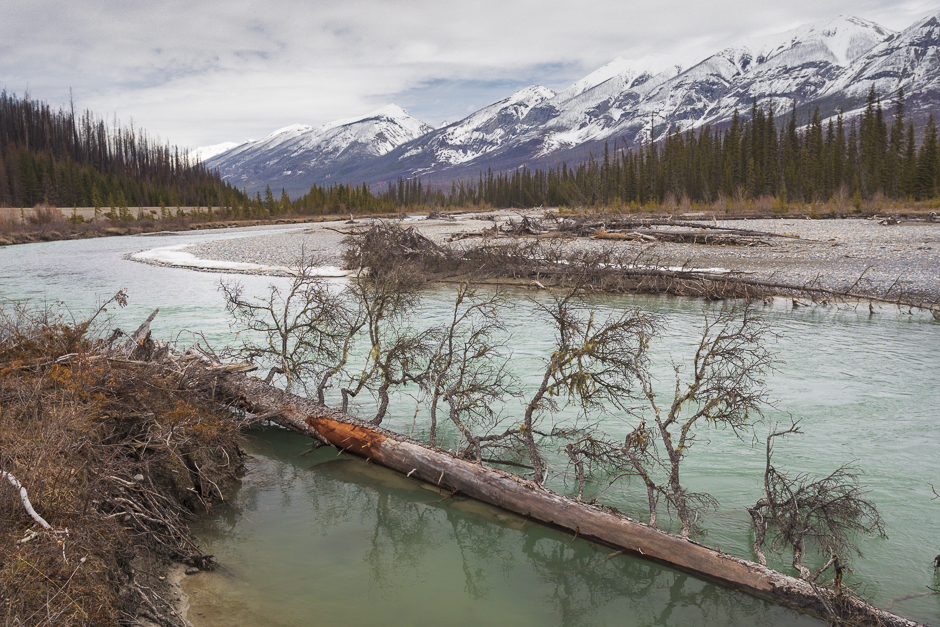
Just across the river from where the previous photograph was taken is this scene, where a small branch of the Kootenay re-enters the main stream. It required a little climbing to get into position for the shot, but it was worth it. This is my favourite for the day.
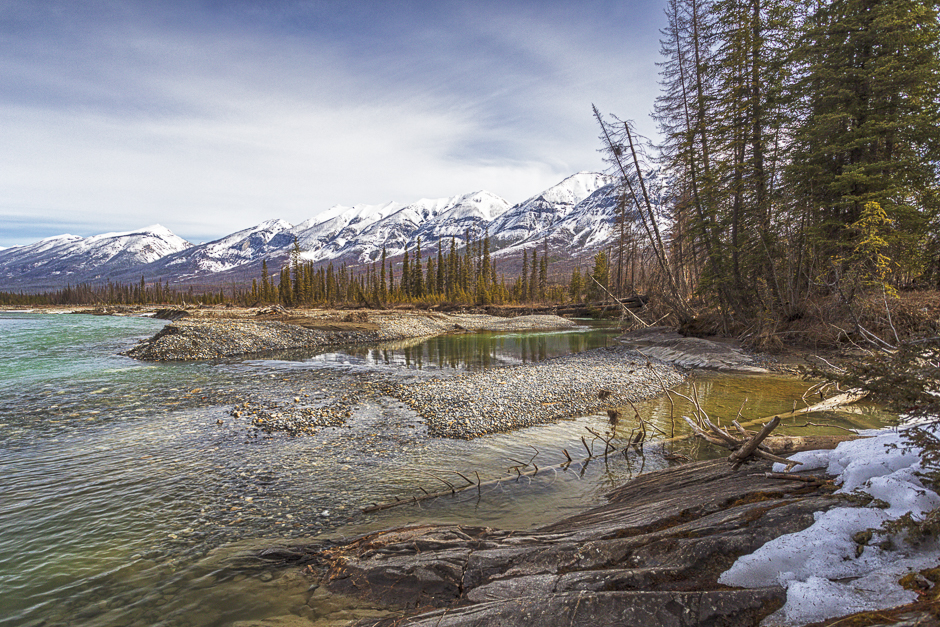
The sight of Mount Wardle caught my eye as we rounded a turn in Hwy. 93. It’s not that the mountain is so interesting, it’s the purplish-brown swath of trees dominating the picture that got my attention. That area has been infested by the pine beetle, killing off all those trees.
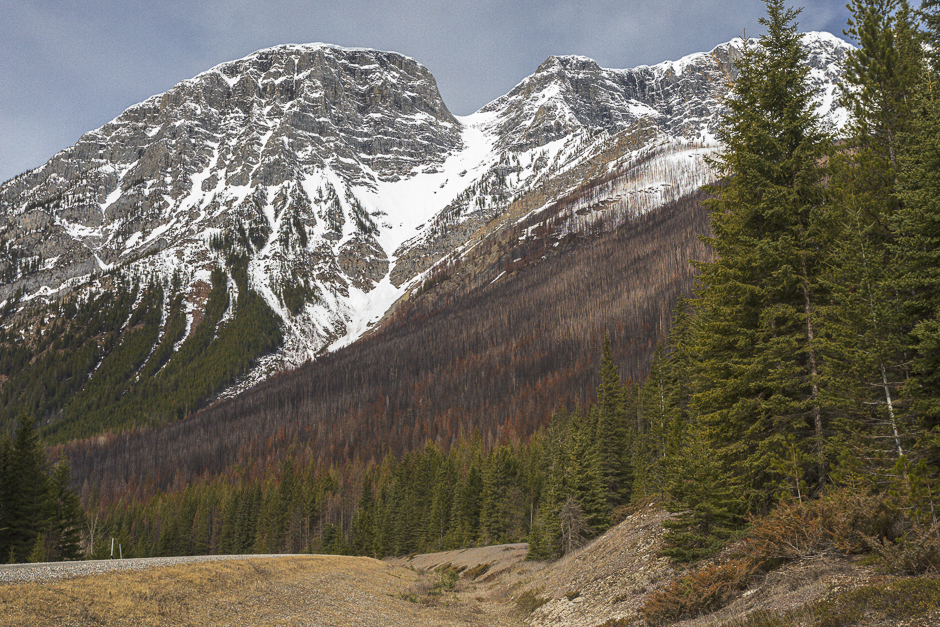
I pulled off onto the roadside to get this next picture of the Kootenay River with the mountain “Tumbling NE5” in the background. Odd name for a mountain! This is a wide angle shot (17 mm focal length) that produces an appealing view of the landscape, in my opinion. The technique is to use a wide angle lens and tilt it downward slightly. This brings the foreground more into play and increases wide angle distortion. (Optical distortion occurs as a result of optical design. In short, optical distortion is a lens error.) Much effort goes into minimizing the effect, for instance straightening vertical objects that bend inward. In this case, I’m trying to use it to advantage. Distortion bends the pattern of rocks in the near foreground inward, combining with the patch of residual snow to direct the eye into the image. The effect is subtle and doesn’t not discernibly distort the trees in the distance. If so interested, you can read more about creatively using lens distortion here…https://www.digital-photo-secrets.com/tip/6343/photo-effects-distortion/
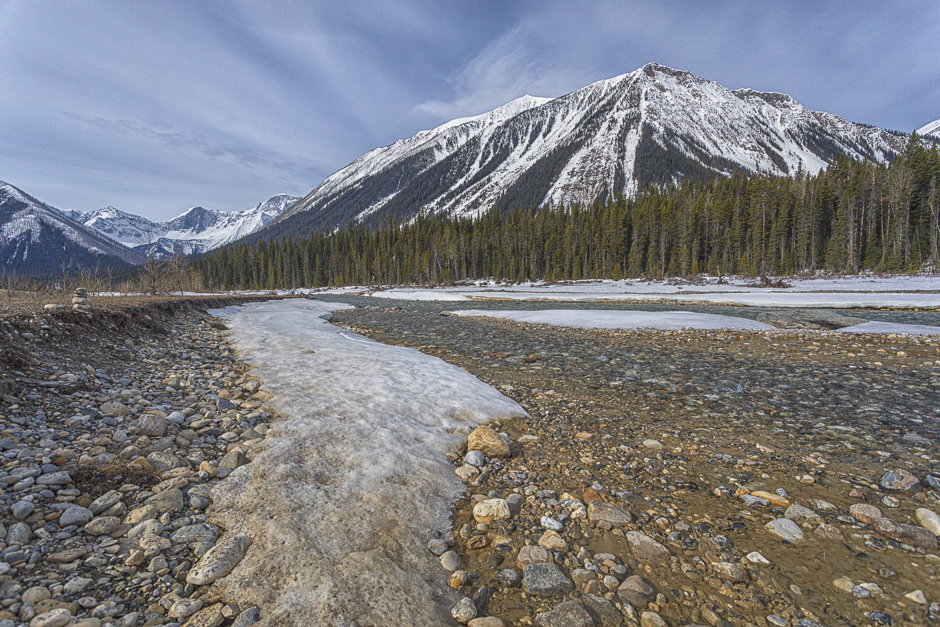
This image shows the expanse of the riverbed, not yet at capacity. The main stream of the Kootenay River is out of view to the left. Chances are good this area will be flooded soon, when the spring run-off reaches a peak. The broad dynamic range (range of light intensities from the shadows to the highlights) of this scene made it difficult to capture in a single image. The final picture is a blended composite of three exposures.
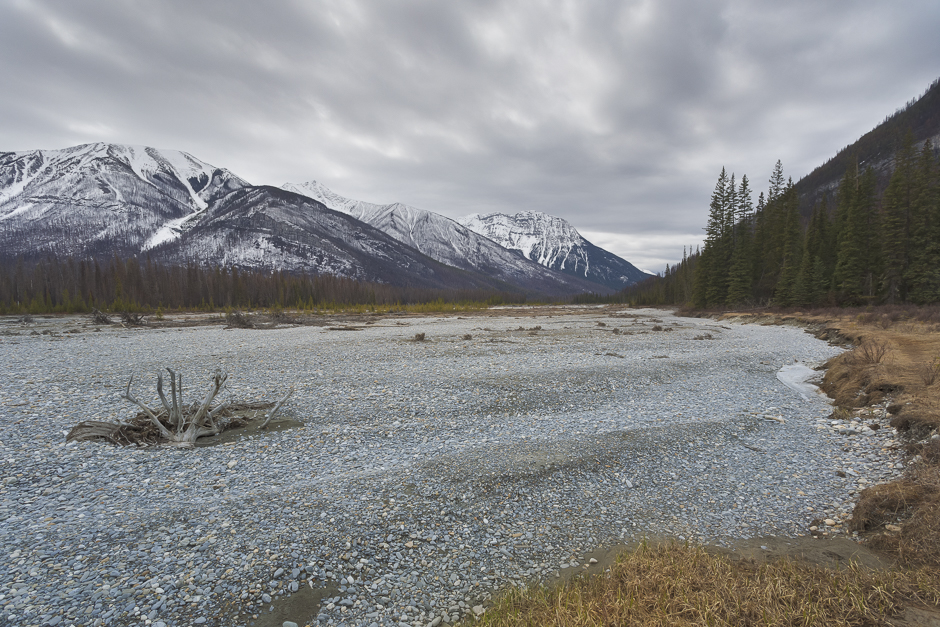
This final picture is quite similar to the first, taken only a few metres upstream. It’s always interesting how a small change in location can alter the perspective. I’ve lost the fallen tree and the river bend while introducing some interesting rocks in the foreground and a tree on the left. That tree is leaning outward; not due to lens distortion, that’s the way it is.
It was great to be outdoors on a pleasant day. We enjoyed a picnic lunch and took in the surroundings before returning home.
